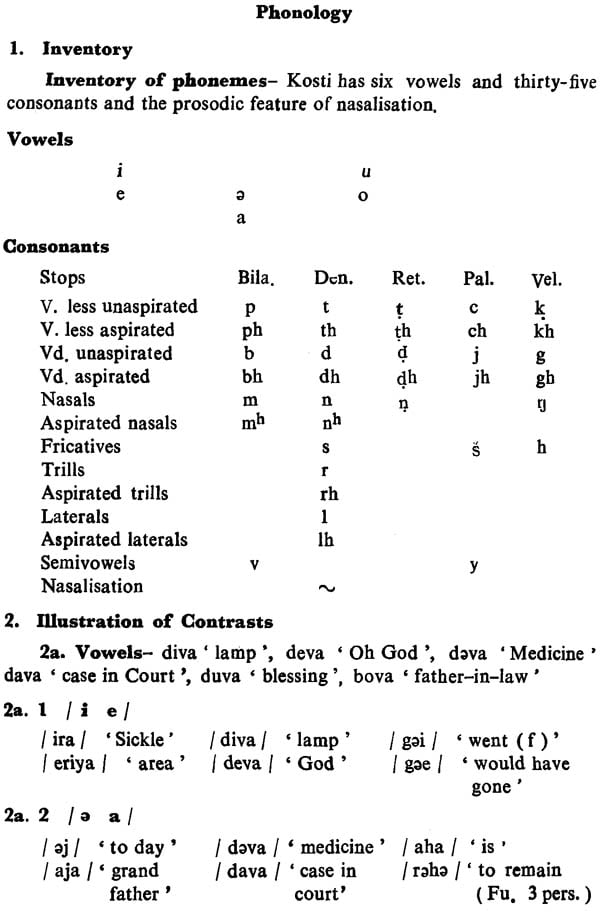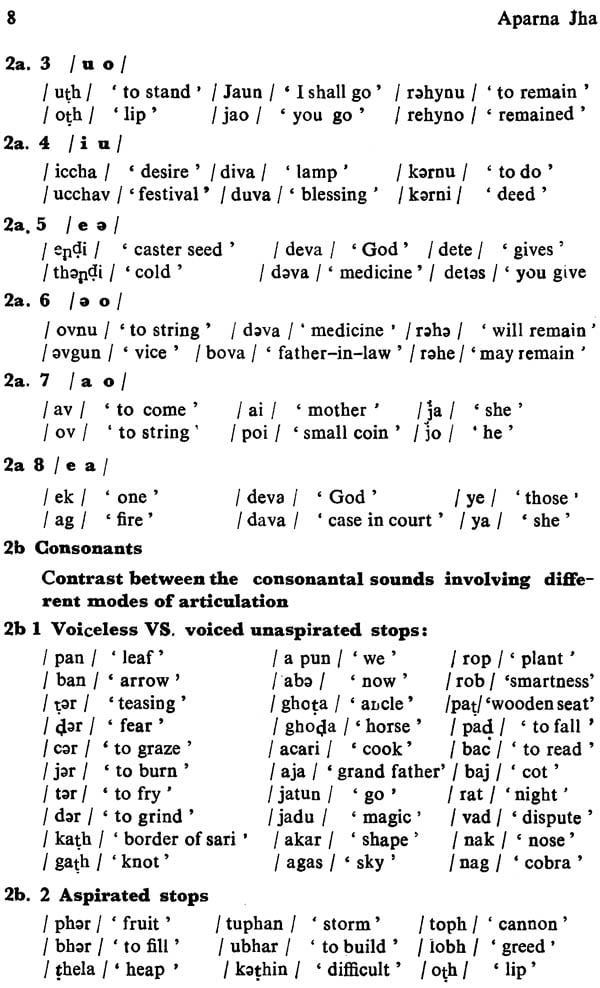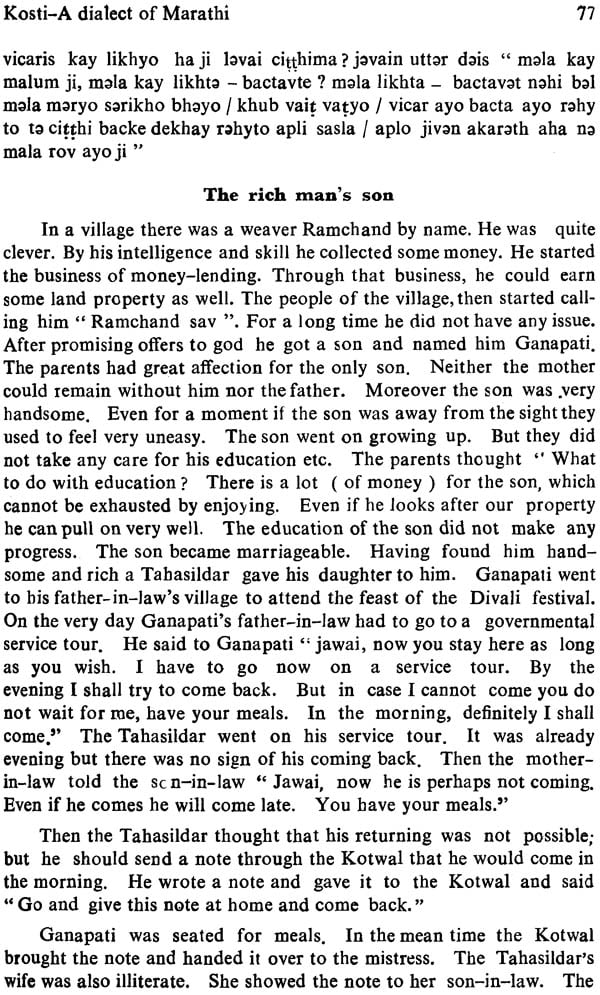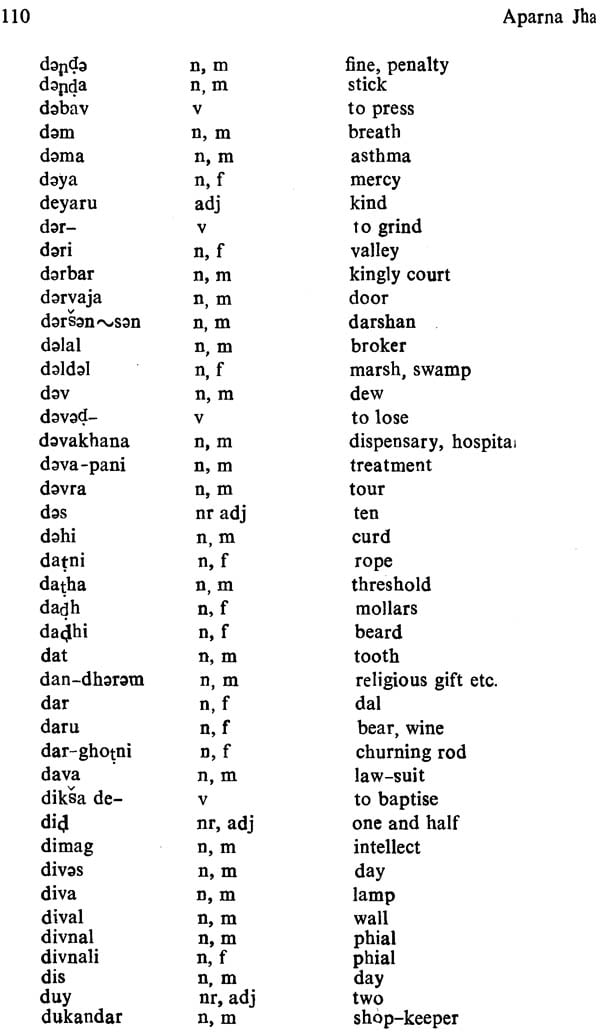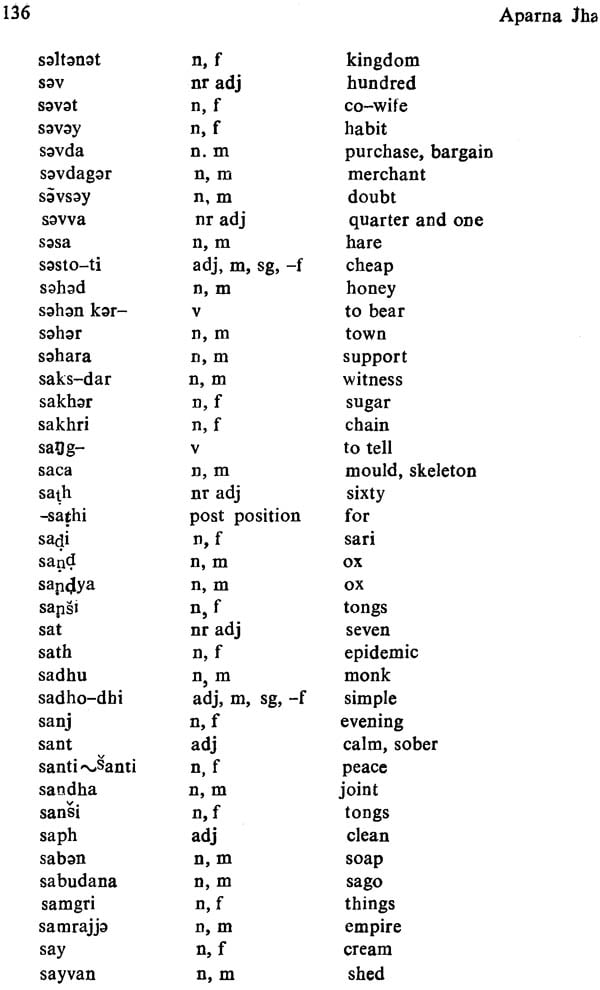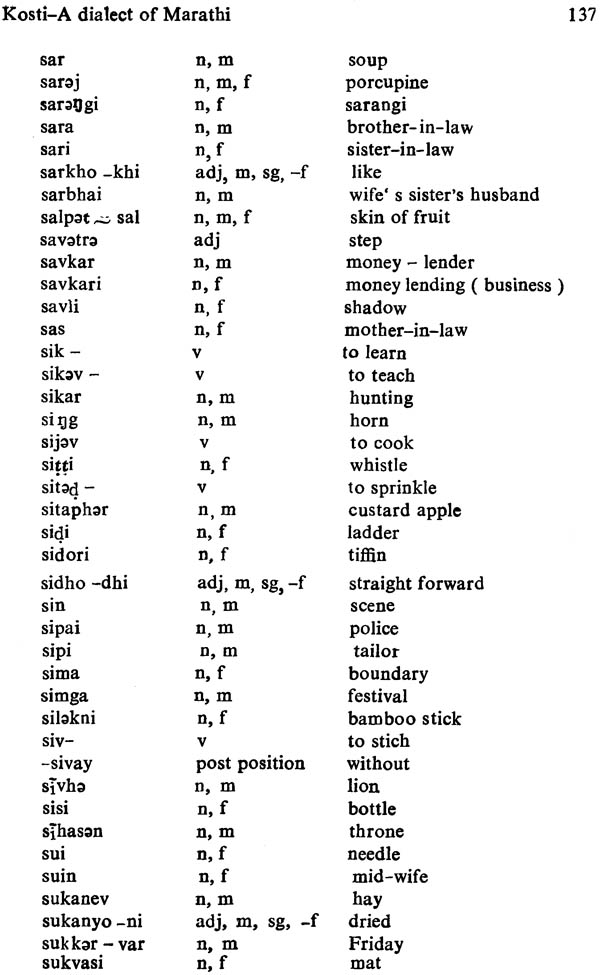
Kosti - A Dialect of Marathi (An Old and Rare Book)
Book Specification
| Item Code: | NAM070 |
| Author: | Aparna Jha |
| Publisher: | Deccan College Postgraduate and Research Institute |
| Language: | English |
| Edition: | 1980 |
| Pages: | 145 |
| Cover: | Paperback |
| Other Details | 8.5 inch x 5.5 inch |
| Weight | 230 gm |
Book Description
1. General Information
Kosti is the Marathi name for the caste of weavers of silk and fine cotton cloth in Maharashtra. They might have migrated from Chhattisgarh and Bastar. At present, they are found in Nagpur, Bhandara, Chanda, Wardha, Yavatmal, Akola and Amarawati districts of Maharashtra. It is said that the Bhosales brought first a group of weavers and they settled down at Budhwari peth at Nagpur. In the city of Nagpur they are about 75,000 in number.
The word Kosti may perhaps be connected with kosa or tasar silk. The Kostis suppose themselves to have descended from the famous Saint Markandi (=Markandeya) Rishi who, they say, first wove cloth from the fibres of the lotus flower to clothe the nakedness of the gods. In return, he was married to the daughter of Surya. The sun and received with her as dowery a giant named Bhawani and a tiger. Since the giant was not obedient, the sage killed him and from his bones fashioned the first weaver’s loom. the tiger remained quite obedient to Markandi and this is the reason why the Kostis, even today, respect a tiger. They will never kill or injure a tiger and if by chance they meet a tiger in a forest they will utter the name of Markandi and the tiger will pass by without doing any herm to them, they believe. At their weddings the Bhat or genealogist brings a picture of a tiger and the Kostis worship it. They also worship the Singhwahini Devi or Devi riding a tiger.
Divisions of caste
The Kostis have several sub-castes of which Salewar, Devangan, Deshkar, Martha, Lad, Garhewal, and Halbi can be mentioned here. Salewar is the Telugu name for the Kosticaste and is said to be from the Sanskrit salika, a weaver. It can also be connected with the common word sari, the word for a woman’s cloth. Possibly, the English ‘shawl’ is also derived from the same root.
Lad Kostis hail from Gujarat, Garhwal from Garh or Jabbalpur, the Deshkar and Martha from Maharashtra, while Devangan, most probably, take their name from the old town of that name of Wardh river. The Halbis appear to be an offshoot of the primitive Halbe, tribe, who have taken to weaving. Many of the Maratha- Kostis are originally Kunbis (cultivators) who have taken up weaving. The Kostis have number of exogamous divisions of the usual type which serve to prevent the marriage of near relatives.
Marriage
The Kostis had a very complicated marriage-function which has been now-a-days almost given up and replaced by a very simpler process of marriage. Previously the ceremony used to be enjoined by a Barat for consecutively five days, whereas now every thing is completed within one day. Formerly, without a Brahmin no such function could be performed whereas now-a-days they do not need any Brahmin at all. The social and economic factors must be responsible for such drastic change of custom. Now, a bride-groom goes to the bride’s house with his relatives and friends to see her and if he likes her, fixes up the marriage by accepting a pan, which is known, as pakka pan. A data is fixed and the bride-groom comes to the bride’s place with the Barat and performs the vidhis which are known as danduk, or mayna. After danduk, arati, lagna and Barat-vidhis are performed and all this is done in one day.
Widow-marriage is allowed among the Kostis. Divorce is also permitted, but is very rare, a wife being too valuable a helper in Kostis industry to be put away except as a last resort.
Religion
The main deity of the Kostis is Gajanan or Ganapati whom they worship on the festival of Ganesh Chaturthi in the month of Bhado (August–September). They clean all their weaving instruments and worship them and make or bring an image of Ganapati to which they make offerings of flowers, rice, and turmeric. They do not work on this day and fast till evening. Many of the Kostis belong to the Kabir-panthi sect and these revere the special priests of the sect and abstain from the use of flesh and liquor. They are known as Ghatibandhia, from the ghat or string of beads of basil-wood (tulsi) which they tie round their necks. The Gurumukhis are a special sect of the Bagpur region and are the followers of a saint named Koliba Bada. They have a descendant of Koliba Baba for their preceptor, and each of them keeps a cocoanut in his house, which may represent Koliba Baba or the unseen deity. They are forbidden to venerate any of the ordinary Hindu deities, but they cannot refrain from making offerings to Matamai when small-pox breaks out. Another sect is that of Matwales who worship Vishnu as Narayan, as well as Siva and Sakti. They are so called because they drink liquor at their religious feasts. In Nagpur district the Kostis observe the Muharram festival, and this observance of a Muhammaddan is no doubt due to their long association with the followers of that religion in Berar.
Superstitions
The Salewar makes obeisance to his loom and implements before beginning work for the day. Without washing his hands and feet he should not touch them. A woman during her periodical impurity must not approach the loom. If any one sneezes as work is about to be begun, they wait for a while to let the bad luck pass off. In Nagpur they believe that the posts to which the ends of the loom are fastened have magical powers, and if any one touches them with his leg he will get ulcers upto the knee. Among some classes of Kostis the killing of a cat is very serious offence, almost equal to the killing of a cow. Even if a man touches a dead cat he has to give two feasts and be fully purified. But all these superstitions are disappearing day-by-day as the society is changing fast.
Social roles and status
Many Kostis eat flesh and fish and drink liquor but in Berar the Lad, Jain and Katghar Kostis are all strict vegetarians. In good old days Kosits used to employ Brahmins for their ceremonies but now–a–days they do not need any Brahmin, for such purpose. They live in towns and weave the finer kinds of cloth for which considerable skill is required, while in former times their work also yielded a good remuneration. These facts account for their higher status in comparison to other low castes.
Occupation
The main occupation of the Kostis is the weaving of the fine silk–bordered cloths which are universally worn on the body by well–to–do person of Maharashtra. Each colony of Kostis in a separate town usually weave only one kind of cloth of the size for which their looms are made. The following account of the Kosti- caste is given in Sir R. Craddock’s Nagpur Settlement Report:
“The Kosti is an inveterate grumbler, and indeed from his point of view he has a great deal to complain of. On the one hand the price of raw cotton and the cost of his living have increased very largely; on the other hand, the product of his loom commands no higher price than it did before and he cannot adapt himself to the altered environment and clings to his loom. He dislikes rough manual labour and alleges, no doubt with truth that it deprives him of the delicacy of touch needed in weaving the finer cloths. If prices rise he is the first to be distressed and on relief works he cannot perform the requisite task and has to be treated with special indulgence. The mills have been established many years in Nagpur, but very few of the older weavers have sought employment there. They have begun to send their children, but work at home themselves, though they really all use machine–spun yarn. The Kostis are quarrelsome and addicted to drink, and they have generally been the chief instigators of grain riots when prices rise. They often marry several wives and their houses swarm with proportionate number of children. But although the poorer members of the community are in struggling circumstances and are put to great straits when prices of food rise, those who turn out the fine silk–bordered work are fairly prosperous in ordinary times.” (Quoted from Russell, 1969, “Tribes and Castes of the Central Provinces of India” p.89).
To a great extent this condition to the Kostis still remains even today; but gradually they are adapting the modern professions. In Nagpur city there are doctors, engineers, teachers etc. among the Kostis.
| Introduction | 1-5 |
| Abbreviations | 5-6 |
| Phonology | 7-25 |
| Illustration of Contrasts | 7-11 |
| Description of Vowels | 11-13 |
| Description of Consonants | 13-17 |
| Distribution of phonemes clusters | 17 |
| Vowels | 17-18 |
| Consonants | 18-24 |
| Syllabic patterns | 24-25 |
| Morphophonemics | 25-27 |
| Morphology | 27-67 |
| Derivative suffixes | 28-33 |
| Substantives | 33-36 |
| Adjectives | 36 |
| Pronouns | 36-38 |
| Inflectional suffixes | 38-41 |
| Post-Positions | 41-42 |
| Numerals | 43-47 |
| Verbs | 47-65 |
| Simple tenses | 50-54 |
| Defective verbs | 52-54 |
| Complex verbal formation | 54-62 |
| Non-finite verbal forms | 62-65 |
| Adverbs | 65 |
| Non-Changing adjectives | 65-66 |
| Interjections | 66 |
| Conjunctions | 66-67 |
| Greetings | 67 |
| Basic Syntax | 67-75 |
| Texts | 77-84 |
| Vocabulary | 85-141 |
